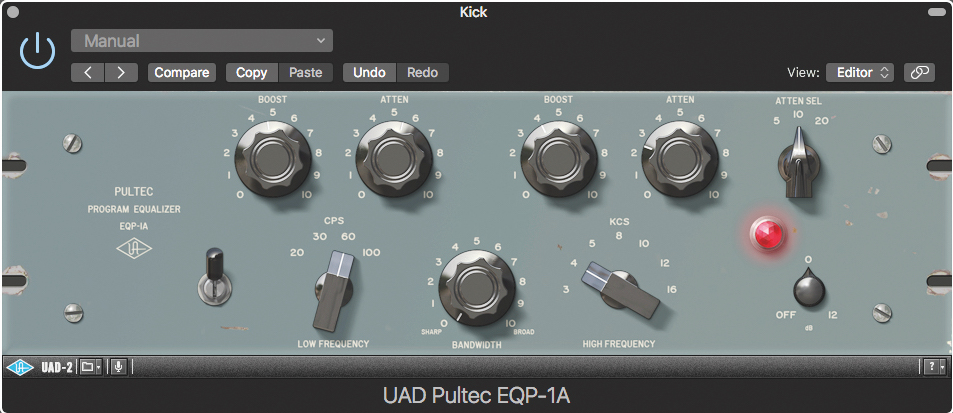How to get the most out of the classic Pultec EQP-1A and MEQ-5
Maximise the potential of these vintage EQs

Pultec's classic EQP-1A and MEQ-5 might look ‘limited’ by digital standards, but their sound and flexibility can benefit every element of a mix.
In this guide, we're going to take you through how to get the most out of these processors using two digital clones from UAD's Pultec Passive EQ Collection.

Step 1: Here’s our starting mix. We’ve programmed some sequences from Zebra, and added beats on individual channels from Battery 4. There are no EQs on any of the sounds but we’ve added auxiliary reverb (Valhalla VintageVerb) and Waves’ H-Delay to some sounds.

Step 2: We set UAD’s Pultec EQP-1A up on the kick and switch the low frequency dial to 60Hz. Boost by 5 and attenuate a little more. The overlapping bands adjust adjacent frequencies, so get a more refined, punchy bottom end. Listen to the original, the processed and ‘in context’ kick in the audio example.

Step 3: Use the Pultec MEQ-5 on the main pitched sequence. The original sound is a little bit wooly and we’d like to make more of the lo-fi, clicky element. So boost a little at 700Hz, dip substantially at 500Hz and boost again at 3kHz.

Step 4: The backbeat element is a little murky. We attenuate quite hard at 100Hz to reduce the weight of the heavier tom part (end of bars 4 and 8), whilst lifting at 5kHz to add air to the lighter ‘clap’ sound. There’s real presence as a result.

Step 5: We put the two pulsing, ticking parts in a group and add an EQP-1A. We use the boost/attenuate dials at the bottom end (at 100Hz) to create a resonance which works nicely. We do something similar at 4kHz. There’s more purpose to these parts now.
Want all the hottest music and gear news, reviews, deals, features and more, direct to your inbox? Sign up here.

Step 6: Lastly, we put the EQP-1A over the output bus, before the limiter. Here we add air at 12kHz and add a touch more at 60Hz than we cut, again producing a slightly sharper, more resonant bottom end. Compare the resulting mix with the mix in Step 1 again.
Future Music is the number one magazine for today's producers. Packed with technique and technology we'll help you make great new music. All-access artist interviews, in-depth gear reviews, essential production tutorials and much more. Every marvellous monthly edition features reliable reviews of the latest and greatest hardware and software technology and techniques, unparalleled advice, in-depth interviews, sensational free samples and so much more to improve the experience and outcome of your music-making.
